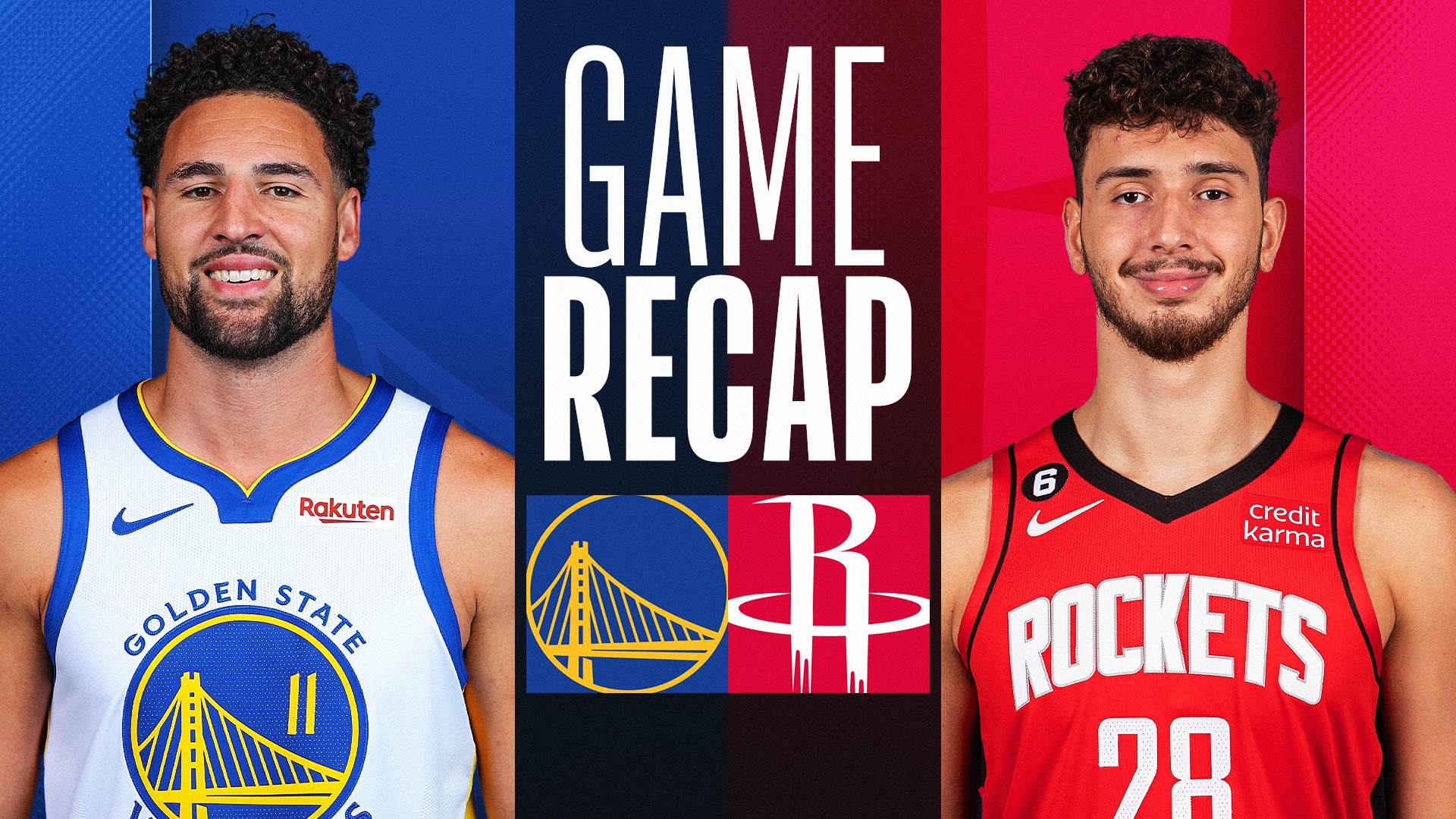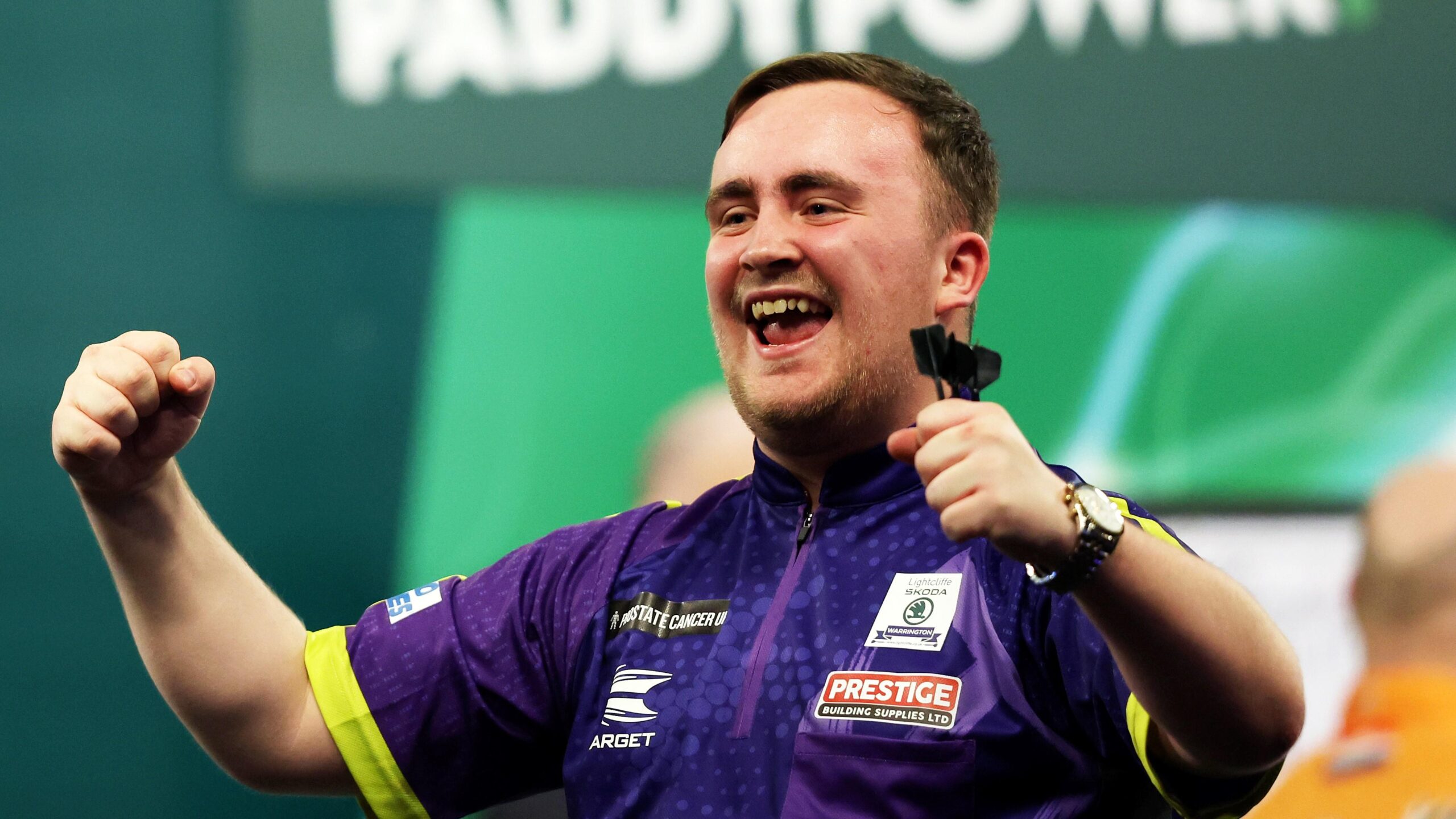Sports
Golden State Warriors vs Houston Rockets Match Player Stats: A Complete Breakdown

The Golden State Warriors vs Houston Rockets match player stats have always been a talking point among NBA enthusiasts. These two teams share a long-standing rivalry that has delivered some of the most exhilarating moments in basketball history. Whether it’s the sharpshooting of Stephen Curry or the explosive plays from Houston’s backcourt, every face-off is a showcase of talent, strategy, and raw athleticism.
In this article, we provide a detailed and SEO-optimized breakdown of player statistics from a recent high-voltage match between the Golden State Warriors and the Houston Rockets. From individual performances to team comparisons and key takeaways, you’ll find everything you need to relive the excitement and analyze the numbers.
Table of Contents
-
Introduction to the Rivalry
-
Match Overview
-
Golden State Warriors Player Stats
-
Houston Rockets Player Stats
-
Key Player Matchups
-
Statistical Analysis and Highlights
-
Historical Context and Future Implications
-
Conclusion
The Legendary Rivalry: Warriors vs Rockets
The Golden State Warriors and Houston Rockets have clashed countless times in regular season games and playoff showdowns. From 2015 to 2019, both teams often met in intense Western Conference battles, with the Warriors usually coming out on top. However, every match has been a statistical goldmine, revealing trends, individual improvements, and the tactical evolution of both franchises.
This latest game was no different—it was a data-rich showcase of elite basketball, giving analysts and fans plenty to talk about regarding the golden state warriors vs houston rockets match player stats.
Match Overview
Date: June 20, 2025
Venue: Chase Center, San Francisco
Final Score: Warriors 118 – Rockets 110
The game was a close contest until the final few minutes, with both teams battling hard. The Warriors leaned on their veterans and ball movement, while the Rockets showcased youthful athleticism and outside shooting. The match was not just entertaining—it was statistically significant in many ways.
Golden State Warriors Player Stats
The Warriors, led by Stephen Curry and Klay Thompson, combined their veteran experience with emerging talent like Jonathan Kuminga and Moses Moody. Here’s a detailed look at individual performances.
Stephen Curry – PG
-
Points: 34
-
Assists: 9
-
Rebounds: 5
-
3PT Shooting: 6-11
-
Turnovers: 2
Curry was unstoppable throughout the game. His off-ball movement created havoc for Houston’s defense, and he delivered clutch threes when needed most.
Klay Thompson – SG
-
Points: 22
-
Rebounds: 6
-
3PT Shooting: 4-9
-
Defensive Rating: +7
Thompson was efficient from the perimeter and played solid defense on Houston’s backcourt.
Draymond Green – PF
-
Points: 10
-
Assists: 11
-
Rebounds: 9
-
Steals: 3
Green acted as the floor general on defense and was instrumental in setting up plays through his passing.
Jonathan Kuminga – SF
-
Points: 16
-
Rebounds: 7
-
FG%: 55%
Kuminga continues to develop into a two-way player, using his athleticism to finish at the rim and defend bigger opponents.
Bench Contributions
-
Chris Paul: 8 points, 6 assists
-
Gary Payton II: 4 steals, high defensive pressure
-
Kevon Looney: 9 rebounds
Houston Rockets Player Stats
The Rockets are building around a young core including Jalen Green, Alperen Sengun, and Jabari Smith Jr. This match showed glimpses of their potential and current limitations.
Jalen Green – SG
-
Points: 29
-
Assists: 4
-
3PT Shooting: 5-12
-
Turnovers: 4
Green was aggressive from the start. While he made big plays, his decision-making under pressure still needs refinement.
Alperen Sengun – C
-
Points: 18
-
Rebounds: 10
-
Blocks: 2
-
FG%: 60%
Sengun was efficient in the post and caused problems for the Warriors’ interior defense.
Jabari Smith Jr. – PF
-
Points: 14
-
Rebounds: 8
-
3PT Shooting: 2-6
Smith showed his versatility but struggled against the physicality of Draymond Green.
Amen Thompson – PG
-
Points: 11
-
Assists: 8
-
Steals: 2
Thompson’s court vision was impressive, and he was key in initiating fast breaks.
Bench Contributions
-
Dillon Brooks: 12 points, tough defense
-
Cam Whitmore: 7 points in limited minutes
-
Fred VanVleet: 6 assists off the bench
Golden State Warriors vs Houston Rockets Match Player Stats – Key Head-to-Head Comparisons
This section highlights the primary battles that influenced the game outcome and further explores the golden state warriors vs houston rockets match player stats.
Curry vs Green
Curry’s experience outshined Green’s explosiveness. Despite Green’s scoring spree, Curry’s command of the game made the difference. His assist-to-turnover ratio (9:2) was a testament to his composure.
Sengun vs Green (Draymond)
This matchup was a chess game. While Sengun scored efficiently, Draymond’s defensive IQ ensured that he didn’t dominate. Draymond also had more assists and was crucial in transition defense.
Kuminga vs Jabari Smith Jr.
Both young players are touted as future stars. Kuminga was slightly more impactful with his high FG% and timely rebounding, while Smith struggled to stretch the floor consistently.
Statistical Analysis and Highlights
Let’s delve deeper into team and player metrics to see how the stats shaped the outcome.
Team Stats Comparison
| Category | Warriors | Rockets |
|---|---|---|
| Field Goal % | 50.5% | 47.3% |
| Three-Point % | 39.6% | 35.1% |
| Free Throws | 18-22 (81%) | 15-19 (78%) |
| Rebounds | 45 | 42 |
| Assists | 28 | 23 |
| Turnovers | 11 | 15 |
| Fast Break Points | 17 | 14 |
| Points in the Paint | 48 | 44 |
Highlights
-
Curry’s six three-pointers gave the Warriors a major edge.
-
The Warriors’ ball movement (28 assists) exposed Houston’s young defense.
-
Houston’s bench outscored Golden State’s 33-29 but couldn’t shift the momentum.
Historical Context and What It Means Going Forward
Historically, the Warriors have had the upper hand in this matchup. With this win, Golden State now leads the all-time regular-season series by a comfortable margin. However, Houston’s young core is growing fast, and this game showed they are no longer an easy team to beat.
For the Warriors, this game proved that their championship window is still open if their veterans stay healthy and the bench continues to contribute. For the Rockets, close games like this one are vital learning opportunities. As their chemistry builds, expect them to turn these close losses into wins.
Conclusion: More Than Just Numbers
The golden state warriors vs houston rockets match player stats not only reflect individual brilliance but also the evolution of two teams at different stages in their journey. The Warriors’ blend of experience and tactical maturity gave them the edge in this clash, while the Rockets’ energy and talent kept the game competitive till the very end.
As the season progresses, matchups like these will continue to tell compelling stories—of veterans defending their legacy and young guns eager to establish theirs. Whether you’re a die-hard Warriors fan, a loyal Rockets supporter, or just a lover of basketball analytics, this matchup offered valuable insights into the ever-changing landscape of the NBA.
Sports
Crypto30x.com AC Milan Partnership: Driving Football’s Digital Future

Crypto30x.com AC Milan: Revolutionizing Football in the Digital Age
The world of sports is no stranger to transformation, but in recent years, one trend has captured global attention like never before—the fusion of cryptocurrency and football. Among the most exciting developments in this space is the crypto30x.com AC Milan partnership, a collaboration that blends the passion of sport with the innovation of blockchain technology. This relationship not only redefines fan engagement but also sets new benchmarks for how digital finance can integrate with one of the world’s most popular games.
In this article, we’ll explore the background of AC Milan’s digital strategy, the role of Crypto30x.com in the sports-fintech arena, and the ways this partnership is creating a fresh chapter in football history.
The Evolution of Football in the Digital Era
Football clubs have always been pioneers in adopting new trends to enhance their brand, attract fans, and expand revenue streams. From televised matches to social media livestreams, every era has brought new ways for fans to connect with their favorite teams.
However, the latest leap—cryptocurrency partnerships—is especially groundbreaking. Blockchain-based collaborations offer more than just sponsorship; they provide innovative tools for fan participation, ticketing, merchandise sales, and even governance through fan tokens.
AC Milan, one of the most storied clubs in European football, has shown a remarkable willingness to embrace these technologies. By aligning with forward-thinking companies like Crypto30x.com, the club is reinforcing its image as a global leader both on and off the pitch.
Understanding the Crypto30x.com Platform
Before diving into the specific partnership, it’s important to understand what Crypto30x.com brings to the table. The platform is designed as a comprehensive hub for cryptocurrency investment, education, and community interaction. It appeals not only to seasoned investors but also to newcomers curious about blockchain’s potential.
Key features of Crypto30x.com include:
-
Advanced Trading Tools: Allowing users to track, analyze, and invest in various cryptocurrencies efficiently.
-
Educational Content: Guiding beginners on blockchain basics, wallet security, and investment strategies.
-
Community Engagement: Offering forums, live events, and partnerships that link crypto with popular culture—including sports.
By targeting mainstream markets like football fans, Crypto30x.com expands its audience far beyond traditional cryptocurrency circles.
Why AC Milan Chose to Partner with Crypto30x.com
The crypto30x.com AC Milan collaboration is a strategic move for both sides. AC Milan gains access to cutting-edge digital engagement tools and taps into a rapidly growing global crypto community. For Crypto30x.com, the partnership boosts brand visibility and credibility by associating with a club boasting over 120 years of history and a vast international fanbase.
Mutual benefits include:
-
Expanded Fan Engagement: Through blockchain-powered experiences, fans can enjoy exclusive rewards, vote on club-related polls, and access VIP events.
-
Global Reach: AC Milan’s massive worldwide audience exposes Crypto30x.com to millions of potential users.
-
Brand Innovation: Both entities strengthen their reputation for embracing technology and modern trends.
The Impact on Fans and the Football Experience
For fans, this partnership goes beyond traditional sponsorship logos on kits or billboards. Blockchain technology allows for practical, engaging experiences such as:
1. Digital Collectibles
Fans can purchase, trade, and own authenticated digital memorabilia—from iconic match highlights to limited-edition player cards. These NFTs (non-fungible tokens) are powered by blockchain, ensuring ownership authenticity.
2. Fan Tokens and Voting Rights
Crypto30x.com’s technology can facilitate fan tokens, allowing supporters to participate in certain club decisions. Whether it’s choosing the warm-up song or voting on kit designs, fans feel more connected to the team.
3. Crypto Payment Options
Ticketing and merchandise purchases can potentially be made using cryptocurrencies, making transactions faster, more secure, and borderless.
AC Milan’s History of Innovation
AC Milan’s embrace of digital technology is not entirely new. The club has long been known for its innovative approach:
-
Pioneering Training Methods: Integrating sports science into training decades before it became common.
-
Global Fan Engagement: Establishing fan clubs worldwide and embracing early social media adoption.
-
Digital Content Creation: Producing high-quality online content that keeps fans engaged 24/7.
The partnership with Crypto30x.com is simply the next logical step in a journey of consistent innovation.
The Broader Context: Cryptocurrency in Sports
The crypto30x.com AC Milan deal is part of a much larger trend. In recent years, top-tier football clubs, NBA teams, and even Formula 1 teams have signed cryptocurrency-related sponsorship deals.
Why this trend is growing:
-
Revenue Generation: Sponsorships with blockchain companies often involve substantial financial investment.
-
Tech Appeal: Aligning with crypto brands helps clubs appear modern and forward-thinking.
-
Fan Demographics: Younger generations—especially millennials and Gen Z—are more likely to be interested in cryptocurrency, making it an attractive marketing crossover.
Potential Risks and Criticism
While the partnership is exciting, it’s not without challenges. Critics of crypto involvement in sports point to:
-
Market Volatility: Cryptocurrency values can fluctuate dramatically, impacting the perceived stability of such partnerships.
-
Regulatory Concerns: Crypto regulations vary widely across countries, potentially affecting international fan access.
-
Fan Education Needs: Many fans may be unfamiliar with cryptocurrency and blockchain, requiring thoughtful educational initiatives to avoid confusion or mistrust.
However, both AC Milan and Crypto30x.com appear committed to addressing these issues proactively.
Future Prospects of the Partnership
The future for crypto30x.com AC Milan looks promising. Both organizations have hinted at expanding collaboration into areas such as:
-
Metaverse Experiences: Creating virtual stadiums or interactive online environments where fans can watch games and socialize.
-
Enhanced Data Analytics: Leveraging blockchain for secure player performance data, benefiting coaching and sports science.
-
Global Crypto-Football Events: Hosting tournaments or exhibitions where crypto plays a central role in ticketing, rewards, and media coverage.
If executed well, these initiatives could position AC Milan as a model for how sports and blockchain can work together.
How This Shapes the Football Industry
The ripple effects of partnerships like this extend beyond AC Milan. Other clubs will be watching closely, learning from successes and challenges. In time, we may see:
-
Widespread adoption of blockchain-based ticketing systems to combat fraud.
-
More fan-driven governance models through token voting.
-
Growth of sports-specific cryptocurrencies that enable multi-club fan engagement.
AC Milan’s willingness to pioneer in this space could influence the entire industry’s digital trajectory.
Final Thoughts
The crypto30x.com AC Milan partnership isn’t just a business arrangement—it’s a glimpse into football’s digital future. By combining the emotion and tradition of one of the world’s greatest football clubs with the innovation and efficiency of blockchain, this collaboration redefines how fans, teams, and technology can interact.
In an age where digital transformation is shaping every aspect of life, this partnership serves as a reminder that football remains at the forefront of innovation. Whether you’re a die-hard Rossoneri supporter or a crypto enthusiast, the coming years promise to be an exciting journey filled with opportunities for engagement, investment, and community building.
AC Milan’s motto, “Sempre Milan,” takes on a new meaning in this era—forever Milan, but now forever digital, too.
Sports
Sport Climbing Combined Olympics Guide: Rules & Highlights

Sport Climbing Combined Olympics: Everything You Need to Know
The sport climbing combined Olympics format has taken the global stage by storm. First introduced in the Tokyo 2020 Olympics, this adrenaline-pumping event has captured the attention of audiences worldwide. Combining three very different disciplines—speed climbing, bouldering, and lead climbing—the format tests the full range of a climber’s skills.
In this detailed guide, we’ll break down what sport climbing combined Olympics is all about, how it evolved, what the current format looks like, who the top athletes are, and what to expect in future Olympic Games. Whether you’re a climbing enthusiast or a curious sports fan, this article will give you a comprehensive understanding of this fascinating Olympic event.
What Is Sport Climbing?
Sport climbing is a competitive form of rock climbing performed on artificial walls. Unlike traditional outdoor climbing, which relies on natural formations, sport climbing uses specially designed holds to simulate a variety of terrain challenges.
There are three main disciplines in sport climbing:
-
Speed Climbing: Climbers race against each other on a standardized 15-meter wall. The goal is simple: reach the top as fast as possible.
-
Bouldering: Athletes solve short but complex climbing problems without ropes on walls typically 4 meters high. Creativity and problem-solving are key.
-
Lead Climbing: Climbers aim to reach the highest point possible on a wall over 15 meters tall within a specific time limit, using a rope for safety.
Each of these disciplines tests a different aspect of a climber’s abilities: explosive power, technique, and endurance.
The Birth of Sport Climbing in the Olympics
The journey of sport climbing into the Olympic Games was long and hard-earned. The sport made its Olympic debut in Tokyo 2020, after years of lobbying by the International Federation of Sport Climbing (IFSC). However, due to limited medal slots, all three climbing disciplines were combined into a single medal event—hence the creation of the sport climbing combined Olympics format.
This format drew both praise and criticism. Fans loved seeing climbers tackle all three disciplines, while athletes and insiders pointed out that it was difficult to crown a true “best climber” based on a combined score. Nevertheless, the event brought unprecedented attention to the sport.
The Sport Climbing Combined Olympics Format Explained
The Original Format – Tokyo 2020
In Tokyo 2020, the sport climbing combined Olympics format required athletes to compete in all three disciplines: speed, bouldering, and lead. The final score was determined by multiplying the rankings from each event. The athlete with the lowest product of rankings won.
For example:
-
2nd in Speed
-
3rd in Bouldering
-
1st in Lead
Final Score = 2 × 3 × 1 = 6
This system rewarded all-around ability but also meant that a poor performance in one discipline could significantly hurt an athlete’s chances.
Format Changes in Paris 2024
In response to feedback, the Paris 2024 Olympics have adjusted the format:
-
Speed Climbing will now be a separate medal event.
-
Bouldering and Lead Climbing will be combined into one event.
This change better reflects the nature of the disciplines and is considered more balanced and fair. It allows speed specialists to shine independently while still recognizing the synergy between bouldering and lead skills.
Key Differences Between the Disciplines
Speed Climbing
-
A race against the clock and your opponent.
-
Uses a standardized wall route (always the same).
-
Emphasizes agility, reaction time, and explosive strength.
Bouldering
-
Requires solving multiple short problems (“boulders”) on a 4-meter wall.
-
No ropes involved.
-
Focuses on balance, technique, creativity, and power.
-
Time-limited rounds.
Lead Climbing
-
A longer, more sustained climb with a rope.
-
Climbers aim to go as high as possible before falling or running out of time.
-
Prioritizes endurance, efficiency, and mental strength.
In the combined format, excelling in all three disciplines is essential, which is what makes the sport climbing combined Olympics such a thrilling event to watch.
Iconic Moments from the Sport Climbing Combined Olympics
Tokyo 2020 Highlights
-
Alberto Ginés López of Spain shocked the world by winning gold in the men’s event, proving that consistent performance can outperform specialization.
-
Janja Garnbret from Slovenia dominated the women’s field, showing exceptional prowess in bouldering and lead.
These moments were crucial in legitimizing climbing as an Olympic sport and brought many new fans into the community.
Top Athletes to Watch
Janja Garnbret
-
One of the most decorated female climbers in history.
-
Known for her near-invincible bouldering technique and graceful lead climbs.
-
Gold medalist in Tokyo 2020 and favorite in Paris 2024.
Adam Ondra
-
Considered one of the best all-around climbers ever.
-
Although he didn’t medal in Tokyo, Ondra is a fan favorite with immense experience and charisma.
Miho Nonaka and Akiyo Noguchi
-
Two Japanese climbers who have inspired a generation.
-
Both performed strongly in Tokyo and have solid bouldering backgrounds.
Tomoa Narasaki
-
Famous for his explosive style and dynamic movement.
-
An athlete who shines particularly in speed and bouldering.
Training for the Sport Climbing Combined Olympics
The combined format demands a training regimen like no other. Athletes must divide their focus among three vastly different skill sets:
-
Explosive training for speed climbing (e.g., plyometrics, sprint drills).
-
Technical bouldering sessions to improve problem-solving skills and core strength.
-
Endurance workouts for lead climbing, involving long sessions on vertical and overhanging walls.
It’s a physically and mentally demanding journey, requiring constant adaptation and injury management.
Why Is Sport Climbing Combined Olympics So Popular?
There are several reasons why this format has won the hearts of Olympic viewers:
-
Visually captivating: Each discipline is fast-paced and exciting to watch.
-
High drama: The multiplication scoring system can lead to unexpected upsets.
-
Global reach: Climbing is a universal activity with passionate communities across all continents.
-
Accessibility: The sport encourages people of all ages to try climbing at local gyms and bouldering centers.
The sport climbing combined Olympics has added a refreshing layer of diversity to the Olympic Games, aligning with the modern push for more youth-centric and engaging sports.
Future of Sport Climbing in the Olympics
With the refined format debuting at Paris 2024, the future of sport climbing at the Olympics looks bright. There’s already buzz about expanding the number of events and possibly separating all three disciplines permanently, especially if viewership and participation continue to rise.
There’s also hope that new climbing stars will emerge from countries that are still developing their climbing programs, making it a more globally inclusive sport.
How to Watch and Get Involved
If you’re inspired to watch or participate in climbing, here’s how:
-
Olympics Broadcasts: NBC, Eurosport, and other major broadcasters cover the events.
-
Streaming Platforms: Olympic YouTube channels often share event highlights.
-
Indoor Gyms: Most urban areas now have climbing gyms offering beginner lessons.
-
Competitions: Follow IFSC World Cups and Championships to see top climbers in action outside the Olympics.
Engaging with local communities or even trying it out yourself is a great way to experience what makes the sport climbing combined Olympics so special.
Conclusion: A New Era for Olympic Sports
The sport climbing combined Olympics has opened a new chapter in the evolution of competitive sports. Combining speed, power, technique, and strategy into one intense event, it challenges athletes in ways no other Olympic sport does. With the adjustments being made in Paris 2024 and continued global interest, sport climbing is on a trajectory of growth, innovation, and inspiration.
Whether you’re an experienced climber or just a curious observer, there’s no denying the excitement, drama, and beauty that this Olympic discipline brings. Keep your eyes on the wall—because this sport is only going up.
Sports
Luke Littler Net Worth: The Meteoric Rise of a Teenage Darts Prodigy

Luke Littler has taken the world of professional darts by storm. A teenager with nerves of steel and the precision of a seasoned veteran, Littler’s emergence in the spotlight has captivated audiences and earned him accolades from fans and professionals alike. With his incredible performances on the oche, people have started to wonder about his financial success. What is Luke Littler net worth, and how has he accumulated it at such a young age?
In this article, we explore the astonishing journey of Luke Littler — from his humble beginnings to his current status as one of darts’ brightest stars. We’ll dive deep into his earnings, endorsements, assets, and prospects, all while keeping the spotlight on Luke Littler net worth.
The Early Years – A Star in the Making
Beginnings in Darts
Born in 2007 in Warrington, Cheshire, Luke Littler picked up his first set of darts at an incredibly young age. His natural talent and rapid progress were evident almost immediately. Unlike many of his peers who found their footing in the game much later, Littler began competing in youth tournaments and quickly became a name to watch in the junior darts circuit.
Breakthrough Performances
Littler’s journey to prominence began with stunning victories at youth competitions across the UK. By the age of 12, he was already clinching national titles. His technique, poise, and remarkable average scores set him apart from others in his age group. With each tournament, he not only gained confidence but also attracted sponsorship and media attention.
Professional Career and Achievements
Stunning Debut on the Big Stage
The darts world took notice of Littler in 2023 when he debuted at the PDC World Darts Championship. Defying expectations, the then 16-year-old advanced deep into the tournament, defeating top-ranked players and showcasing composure far beyond his years. His appearance generated massive media coverage and elevated him to household-name status almost overnight.
Titles and Rankings
Following his breakthrough, Littler began accumulating titles and improving his world ranking. His consistent performance in televised events ensured high prize money and added credibility to his budding legacy. Sponsorship deals and tournament winnings became regular, contributing significantly to Luke Littler net worth.
Sources of Luke Littler’s Net Worth
Tournament Winnings
The most substantial chunk of Luke Littler’s earnings comes from tournament prize money. Major darts tournaments such as the PDC World Championship, UK Open, Premier League Darts, and European Tour events offer lucrative prize pools. Littler’s ability to advance into later stages of these competitions ensures steady and often impressive payouts.
By mid-2025, it is estimated that Littler has earned well over £500,000 in prize money alone, with projections pushing that figure close to £1 million by year-end, depending on future tournament outcomes.
Endorsements and Sponsorships
As with most professional athletes, sponsorship deals play a critical role in Luke Littler’s net worth. Brands see Littler as the perfect marketing ambassador—young, dynamic, and rapidly rising in popularity. Companies associated with darts equipment, sports apparel, and energy drinks have all approached him for partnerships.
His primary sponsorship deals with darts manufacturers and apparel brands reportedly contribute several hundred thousand pounds annually to his income. These deals also include bonuses tied to performance and exposure in major televised events.
Social Media and Public Appearances
Luke Littler’s growing social media presence adds another stream of income. With hundreds of thousands of followers on platforms like Instagram, TikTok, and X (formerly Twitter), he attracts collaborations with lifestyle and sports brands. Sponsored posts, shoutouts, and YouTube content offer financial returns, often in the tens of thousands.
Moreover, as Littler’s popularity soars, he receives invitations for guest appearances, interviews, and exhibitions — all of which come with appearance fees, adding further value to Luke Littler net worth.
Lifestyle and Spending Habits
A Grounded Teen with Big Dreams
Despite his rapid rise and financial success, Littler is known for staying grounded. He often credits his family and coaches for keeping him focused on the sport rather than material distractions. Unlike some young celebrities who splurge on luxury items, Littler’s lifestyle remains modest, focusing on his training, health, and future aspirations.
Investments and Financial Management
Littler is reported to be receiving guidance from financial advisors to manage his early wealth wisely. A portion of his earnings is being invested in savings and long-term assets. This forward-thinking approach suggests that Luke Littler net worth will continue to grow steadily, even if his career trajectory experiences the typical ups and downs associated with professional sports.
Luke Littler Net Worth in 2025
Estimated Value and Growth
As of 2025, Luke Littler net worth is estimated to be between £750,000 and £1.2 million, factoring in tournament winnings, endorsements, sponsorships, and other income streams. This figure is exceptional for someone under the age of 18, placing him among the wealthiest young athletes in the UK.
Given his current form, media appeal, and marketability, financial experts predict that Littler’s net worth could cross the £5 million mark within the next five years—especially if he continues to dominate the darts scene and expands into international markets.
Comparison with Other Darts Players
Youngest Millionaire in the Game?
If Littler’s momentum continues, he is well on his way to becoming one of the youngest millionaires in darts history. Compared to other legends like Phil Taylor, Michael van Gerwen, and Peter Wright, who built their fortunes over decades, Littler is achieving financial success at a much faster rate.
His youth gives him a substantial time advantage. While the legends of darts built their net worths over 20–30 years, Littler could reach similar levels within a single decade if he continues performing and making smart business decisions.
Challenges and Future Outlook
Navigating Fame and Pressure
While financial success is a blessing, it comes with challenges—especially for someone as young as Luke Littler. The pressure to maintain performance, handle media scrutiny, and make life-changing decisions could overwhelm even the most seasoned athletes. However, so far, Littler has displayed exceptional maturity.
Long-Term Career Potential
Darts is a sport that allows for long careers, often well into an athlete’s 40s and even 50s. This longevity means Littler has decades to refine his game and increase his earnings. If he stays focused and avoids common pitfalls like burnout or injury, his long-term financial outlook remains overwhelmingly positive.
Luke Littler’s Impact on the Sport
Beyond wealth and personal accolades, Littler has had a transformative impact on darts as a sport. His story has reignited interest among younger audiences and inspired a new generation of players. Darts is evolving from a niche pastime to a globally followed competitive sport, and Littler is at the center of that evolution.
Promoters and tournament organizers recognize his influence and are already shaping event marketing strategies around him. This influence will translate into greater visibility and even higher financial rewards in the coming years.
Conclusion: The Sky’s the Limit for Luke Littler
In summary, Luke Littler net worth is a testament to his extraordinary talent, dedication, and market appeal. What makes his journey even more compelling is the fact that he has only just begun. With estimated earnings approaching the million-pound mark before even reaching adulthood, Littler is not only redefining success in darts but also setting new standards for what young athletes can achieve financially.
From tournament victories to lucrative sponsorships, from viral social media moments to a loyal fan base, Littler’s career and net worth are on an exciting upward trajectory. As long as he remains grounded and focused, there’s little doubt that Luke Littler will not only dominate darts but also build an enduring and prosperous legacy both on and off the oche.
-

 Nature4 months ago
Nature4 months agoFascinating World of Facts: A Journey Through Datos Curiosos
-

 Lifestyle5 months ago
Lifestyle5 months agoHow to Make Slime: The Ultimate DIY Guide for Kids and Adults
-

 Entertainment5 months ago
Entertainment5 months agoUnderstanding Basketball Zero Codes: A Complete Guide
-

 Entertainment5 months ago
Entertainment5 months agoStrands NYT: Unraveling the Digital Threads of a New Online Trend
-

 Business3 months ago
Business3 months agoWho Is Alex Karp Wife? Private Life of Palantir CEO
-

 Celebrity4 months ago
Celebrity4 months agoWho Is Drew Pritchard New Wife? Inside the Antique Star’s Private Love Life
-

 Business3 months ago
Business3 months agoRahki Giovanni Net Worth: Income, Fitness, and Success
-

 Celebrity3 months ago
Celebrity3 months agoMelanie Zanona Salary, Career Growth & Net Worth Revealed



